- News
- Reviews
- Bikes
- Components
- Bar tape & grips
- Bottom brackets
- Brake & gear cables
- Brake & STI levers
- Brake pads & spares
- Brakes
- Cassettes & freewheels
- Chains
- Chainsets & chainrings
- Derailleurs - front
- Derailleurs - rear
- Forks
- Gear levers & shifters
- Groupsets
- Handlebars & extensions
- Headsets
- Hubs
- Inner tubes
- Pedals
- Quick releases & skewers
- Saddles
- Seatposts
- Stems
- Wheels
- Tyres
- Tubeless valves
- Accessories
- Accessories - misc
- Computer mounts
- Bags
- Bar ends
- Bike bags & cases
- Bottle cages
- Bottles
- Cameras
- Car racks
- Child seats
- Computers
- Glasses
- GPS units
- Helmets
- Lights - front
- Lights - rear
- Lights - sets
- Locks
- Mirrors
- Mudguards
- Racks
- Pumps & CO2 inflators
- Puncture kits
- Reflectives
- Smart watches
- Stands and racks
- Trailers
- Clothing
- Health, fitness and nutrition
- Tools and workshop
- Miscellaneous
- Buyers Guides
- Features
- Forum
- Recommends
- Podcast
BUYER'S GUIDE
 10 best shock-absorbing seatposts Feb 2022
10 best shock-absorbing seatposts Feb 2022Best road bike seatposts 2022 — vibration damping for a comfier ride
A shock-absorbing seatpost is one of the easiest ways to make your bike more comfortable. By either moving up and down or simply flexing, the best road bike seatposts can help reduce the effect of rear-wheel impacts, minimising vibrations through the main contact point, the saddle. Your derriere will thank you.
- Best overall suspension seatpost: Canyon VCLS 2.0 — Buy Now for £203.95 from Canyon | Find out more
- Best value suspension seatpost: USE Ultimate Vybe suspension seatpost — Buy Now for £85.00 from Tweeks Cycles | Find out more
- Best money-no-object suspension seatpost: Cane Creek eeSilk carbon — Buy Now for £203.99 from Bikester | Find out more
Most shock-absorbing seatposts simply flex to reduce the effect of hitting a bump; this is enabled by the use of carbon fibre composites that can flex a little without being weakened
A few shock-absorbing seatposts actually move, but most telescopic posts are poor quality and best avoided; we've included one good-quality unit here
Another mechanical design, the parallelogram seatpost, is undergoing a bit of a revival and we've included some here
If you want a cheaper alternative, fit the fattest rear tyre your frame will take and let the pressure down a bit
The 10 best shock-absorbing seatposts you can buy in 2022
Best overall suspension seatpost: Canyon VCLS 2.0 — Buy Now for £203.95 from Canyon
Canyon has a range of seatposts designed to take the edge off, from the conventional-looking S23 and S23 VCLS to the S15 and S25 posts with a split-shaft design that Canyon say provides up to 20mm of movement. The clever design provides saddle angle adjustment by sliding the halves of the shaft against each other, while the floating seat clamp keeps the saddle tilt constant as the post flexes.
Best value suspension seatpost: USE Ultimate Vybe suspension seatpost — Buy Now for £85.00 from Tweeks Cycles
Back in the early days of mountain biking, before suspension had properly developed, suspension posts were popular. The go-to post was manufactured by British firm USE. It's still around, and still very nicely made.
This Ultimate Vybe is their latest suspension seatpost, and provides a full 50mm of active tuneable travel. That’s way more the the other posts here, it might be too much for some applications but we can see if for those that want the maximum amount of comfort. Unlike the other posts, because it’s actual suspension, the spring can be adjusted to be softer or firmer and to suit body weight - many other posts can't be adjusted for lighter or heavier riders. There’s also a preload adjustment at the bottom of the post.
It’s available to fit 27.2, 30.9, 31.6 seat tubes, uses USE's Duro single-bolt clamp and the post is fully serviceable. The post and head are machined from aluminium. The 27.2mm post weighs a claimed 455g.
If you want less travel, the XCR Sumo provides a bit less travel, just 30mm, and incidentally was used by Vin Cox when he rode around the world.
Best money-no-object suspension seatpost: Cane Creek eeSilk carbon — Buy Now for £203.99 from Bikester
If you struggle for comfort on longer rides then adding a bit of give – bigger tyres, softer frame, comfier saddle – is always going to be on your mind. You might not have considered actual suspension but the 20mm of compliance offered up by the Cane Creek eeSilk seatpost is a revelation on long rides. Okay, its £300 RRP is some wedge for a seatpost, but it's a beautiful and functional thing that makes a real difference.
Read our review of the Cane Creek eeSilk seatpost
Find a Cane Creek dealer
Cannondale Save Carbon Seatpost — Buy Now for £134.99 from Revel Outdoors
Cannondale's Save post comes stock on most of their carbon Synapse bikes. It's designed for use by riders who want to keep as much of their power transfer, but don't mind losing a little in the name of comfort. Available in either 25.4mm or 27.2mm diameter and featuring an easy-to-adjust 2 blot clamping system, it keeps things nice and simple.
The simplicity also extends to the looks. You'd be hard-pressed to tell that this is a post aimed at comfort.
Cane Creek Thudbuster ST — Buy Now for £142.64 from Amazon
If you want a bit more travel than afforded by the Cane Creek eeSilk, this short-travel version of the venerable Thudbuster provides 50mm of movement, which should work admirably for gravel biking purposes, and costs a hell of a lot less than its stablemate.
It's available in a wide range of lengths and diameters, including a 610mm-long version for Dahon folding bikes.
Ritchey WCS Carbon Link Flexlogic Seatpost — Buy Now for £193.00 from The Woods Cyclery
Tester Jez writes: "As it's impossible to ride the exact same bumps from one ride to the next, all I can give you is my subjective impression, which is that the Ritchey WCS Carbon Link Flexlogic post did indeed offer a modest improvement in comfort when compared to the standard aluminium post that it replaced.
"It's hard to quantify, but it might be of a similar order to the effect of dropping 20psi in your tyres, with the obvious proviso that only your bum (not your hands or feet) will feel the difference.
"There's certainly not enough to really take the sting out of a pothole or bump that snuck up on you, but just a gentle damping effect that takes some of the road buzz out before it reaches your butt."
Read our review of the Ritchey WCS Carbon Link Flexlogic Seatpost
Redshift ShockStop seatpost — Buy Now for £214.99 from RedShift
Redshift Sports have been on a mission to refine and reinvent shock-absorbing bike components, and this parallelogram seatpost is their latest offering. It's claimed to weigh 497g in 250mm-long 27.2mm diameter and provides 35mm of movement.
Syntace P6 Carbon Hi-Flex seatpost — Buy Now for €250 from Syntace
The Syntace P6 Carbon Hi-Flex seatpost, as the name suggests, is designed to flex. The ability to deflect is provided by its specific carbon fibre construction with directional orientation of the fibres and specially shaped internal section.
How much? About 20mm, but that doesn’t mean it’ll deflect that much on every bump you ride over, it might regularly flex between 3 and 10mm. Riding speed and rider weight will affect this too. A 27.2mm 400mm post weighs 226g, and is also available in 30.9, 31.6mm diameters and in 300, 400 or 480mm lengths. Syntace offer the P6 Hi Flex with a satisfyingly long 10 year guarantee
Kinekt 2.1 Aluminium Suspension Seatpost — Buy Now for £236.78 - £266.43 from Amazon
The Kinekt 2.1 Aluminium Seatpost is a spring-loaded suspension seatpost that makes a welcome addition for your gravel or adventure bike. It takes a bit of playing about with to get it set up, but once done it is effective – as long as you don't mind the weight increase.
Tester Stu writes: "The Kinekt 2.1 suspension seatpost uses two springs and a parallelogram style design, which gives about 35mm of vertical travel, but what I really like about it is that it's hugely adjustable.
"In the box you get a range of springs with differing damping rates to reflect your weight. From there you can adjust the pre-load of the spring so you can control the start level of the compression when you are sat on the saddle."
"The practical upshot is that you get a decent amount of travel and the Kinekt 2.1 is highly adjustable, but it ain't cheap."
It's also very difficult to find in the UK at the moment. You might do better ordering directly from parent company Cirrus Cycles in the US.
Read our review of the Kinekt 2.1 Aluminium Suspension Seatpost
Specialized COBL GOBL-R Carbon seatpost — eBay search
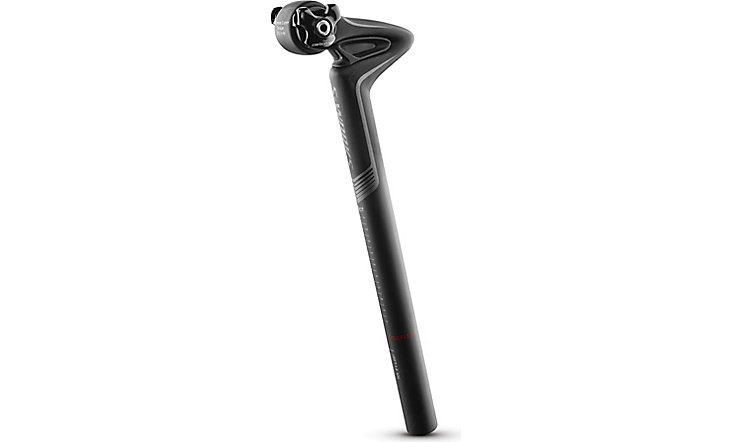
Now sadly discontinued, but still available via eBay, Specialized's COBL GOBL-R Carbon seatpost looks a bit like a cobra and is designed to provide about 7mm of vertical compliance.
The top of the seatpost features the kink with a Zertz elastomer insert sandwiched in the space created. This shape allows the post to flex when you hit a big enough bump in the road. It's based on similar technology found in Specialized's Roubaix bike of the time, but now replaced with the mechanical Future Shock fork suspension.
It’s constructed from FACT carbon fibre to a 27.2mm diameter with a cylindrical aluminium head for easy saddle adjustment.
If the COBL GOBL-R's looks don't appeal, £205 will get you Specialized's far more normal-looking S-Works Pavé SL post, but there's a catch: it only fits 2020 and later Specialized Roubaix bikes and the Tarmac SL6.
Everything you need to know about shock-absorbing seatposts
We’ve seen the explosion in recent years of endurance road bikes designed to provide smoother rides through the use of modified carbon fibre layups, tube shaping or elastomer inserts. They’ve been very popular with cyclists who value speed and performance, but want a smoother ride, especially given how bumpy and rough roads in the UK generally are.
Buying a new frame or bicycle is expensive though. It's actually possible to add more comfort to your current bike, simply by upgrading the seatpost to one that is designed to offer more comfort. There are two main ways to make a more-comfortable seatposts and the posts her are almost evenly divided between them. Six use the inherent flex available in carbon fibre, five use springs to provide a cushioned ride for your bum.
Flexible carbon fibre posts will always be lighter because they lack the springs, pivots and other gubbins needed to make up a mechanism, though it's hard to tell whether some of them are moving at all; some alleged comfort posts that we've reviewed don't seem to provide any significant cushioning. Posts with a pivoting mechanism provide more movement and therefore more cushioning, can be fine-tuned to the rider's weight and work regardless of how much seat post you have showing, but some riders just can't get on with changing saddle height and they add a mechanism that needs maintaining.
Gravel riding is another use case for suspension posts, and it's perhaps clearer here that a mechanical post will do the job better, if you can tolerate the weight. That inch or two of actual motion will allow the rear wheel to move under you, reducing the chances of a damaged rim or a pinch puncture. Before full-suspension took over, suspension seatposts were fairly popular on mountain bikes for exactly this reason. If your bum's not actually on the saddle, though, they're not much use and many would argue that fitting the fattest tyres your frame will take is a better solution for trail and dirt-road riding. Which gets us to:
Other comfort options: Tyre pressure, wider tyres, cushioned saddles and gel bar tape
There are other options for adding a bit more comfort to your ride. A really simple one is to lower the pressure in your tyres. You don’t have to inflate your tyes to the maximum recommended 120psi; try setting them a bit lower. You’ll be surprised at just how much difference that makes. Experiment by dropping just 10psi to start with and see how you get on.
Bigger tyres, provided your frame can take them is another step, but does involve a financial outlay, and you'll need to check your frame and fork can take wider tyres first - many race bikes won't go larger than 25mm. Wider tyres, even going from 23 to 25mm, can make a noticeable difference. The larger cushion of air between you and the road surface dampens much of of the harshness that can contribute to a rough ride, and you can run lower pressures.
Other component changes that can have a measurable difference include fitting a second layer of bar tape or a gel bar tape. This extra padding will provide a bit more vibration absorption and prevent those pesky vibrations from ruining the ride. These are both much cheaper options than buying a new seatpost or tyres, and may be enough for some people. It all depends on your bike, the type or riding you do and the condition of your local roads.
Cafe wisdom: road.cc readers weigh in on shock-absorbing seatposts
jeby: Is there any seatpost (or saddle?) shock absorber that is compatible with D-shaped seatpost/frame?
I don't think d-shaped seatposts are standardised, so you'd need to look if there's anything specific for your bike.
I'm not sure I've seen a saddle "shock absorber" as such although all offer varying levels of flex in both the rails and upper.
IanEdward: Have just taken a Thudbuster ST off my gravel bike.
Initially I really liked it, obvious benefits if and when you couldn't avoid a pothole or puddle etc.
However it developed a really annoying rattle which was audible as soon as you got out of the saddle. I sent it back to Extra who to their credit fixed it quickly and for free. However 200km in and the rattle is returning!
Whilst it was away getting fixed I used a cheap old aluminium seatpost in its place. I was surprised to notice I didn't feel much drawback to using a rigid post, and the bike was noticeably lighter. I've now committed to a rigid post and bought a slightly nicer Pro vibe post. I didn't expect much damping from an aluminium post but at least Pro 'claimed' it offers some. Bike feels faster, lighter and most importantly, I can actually set my saddle up correctly without having to guestimate sag and setback etc.
I *think* my knees are happier for getting rid of the suspension seatpost also, it seemed to be aggravating some ITB syndrome or something in my left knee, but perhaps I just never got the saddle position right.
My verdict is that perhaps suspension seatposts are better suited for MTB/shorter rides where the constant variance in saddle position isn't such a big deal. Perhaps when seated and pedalling for long distances on a road-oriented gravel bike, the bobbing and movement just puts extra strain on knees?
ktache replied to IanEdward:
I too get a small rattle when out of the saddle, this I think it's because the elastomer is undamped and without weight is free to move. I found that the extra comfort make this bearable. Each to their own.
Mine was bushings, even with the little bits of space around the elastomer all filled in with bar tape off-cuts it would still happen.
"I found that the extra comfort make this bearable. Each to their own."
Agreed, I just realised I didn't need the extra comfort and unfortunately am cursed with finding squeaks and rattles especially annoying!
I did find that the neoprene cover (expensive for what it is) took away some of the rattle when the seat was not loaded.
Should stop the filth getting in too, it's on the good bike, when I properly go off road I remove the mudguard from the seatpost so I can drop it more.
TheSmallRing: I have the Prime Kanza Gravel Seatpost. It claims to have "anti-shock technology", but it just feels like a regular stiff aluminum seatpost.
[We've reviewed that and were similarly unimpressed — Ed]
ktache: aOaN gave a fine comparison between the thudbuster ST, Redshift and suntour here https://road.cc/content/review/271487-redshift-shockstop-suspension-seat...
DaveS: One can often gain quite a lot of flex just by pushing the saddle back as far as possible on it's rails. This allows the rails to flex and costs nothing. I use a cheap carbon seatpost from eBay, approx 15 quid but have put some horizontal saw cuts across the back. 5 cuts in my case. I use a junior hacksaw and cut as deep as the blade with the top cut, reducing on depth to about half that as I get lower. Each cut is 10mm apart. The junior hacksaw ensures the cuts are thin. I drill stress relief holes at the ends of the cuts. Easy to experiment and very little to lose.
I have failures, mostly due to cutting too deep or using a normal hacksaw which created cuts too wide, but failures are not dramatic, just cracking around the ends of the cuts.
[While we're always happy to pass along readers' ideas we want to make it clear that we do not recommend taking a hacksaw to a seatpost like this — Ed]
joeegg: I have the Canyon seatpost and can't detect any difference to a rigid carbon one i have. Biggest difference to the ride is lower tyre pressure and wheel type.
I have it too and notice a huge difference!
a.jumper: Sprung (not over-padded) saddles are a darned sight cheaper than springy seatposts, as long as you don't mind negative comments from the fashionistas.
Jensen: Good article.
Tried Specialized's COBL GOBL-R Carbon seatpost but I weigh too little (under 80kilo) to have any effect and talking to other people say the same, they weigh too little for it have any effect on them.
I ended up with Ritchey WCS Carbon Link Flexlogic Carbon Seatpost and have never looked back again when I ride my Alu roadbike for more flex and soft ride ![]()
Yep, I have it also and can't feel any difference at all.
ktache: My Cane Creek ThudBuster ST has been excellent. Only 1 1/3 inches of travel, but takes the edge off off road and is plush on. Did think about the long travel, but my seatpost is fairly full and I wouldn't have been able to drop it for the going down bits. The ST is a bit lighter than the Suntour.
hawkinspeter: I'm curious if anyone has tried a SR Suntour SP12-NCX seatpost.
Edit: thought I'd look for some reviews and it seems to work really well, but the weight is approx 765g so probably better for touring.
Langsam replied to hawkinspeter
I have one on my e-hardtail for commuting. It's outstanding in that application. Recommended.
iandusud replied to hawkinspeter
I have recently fitted one on the back of our tandem to replace a telescopic suspension post. My stoker is impressed - big improvement. Considerably cheaper than the Thudbuster I was considering and it has an adjustable spring rate. It is not light but on a tandem that already has an all up weight of around 175kg it is neither here not there. I highly recommend.
benbrangwyn replied to hawkinspeter
I've recently bought one (Suntour SP12-NCX) and I'm super impressed - I ride mainly on the road in Devon, where the surfaces aren't exactly smooth.
It feels odd at first, almost like the front of the bike is flexing because as the parallelogram compresses your arse moves further away from the handlebars. But I got used to it quickly. The adjustability is impressive too, just using an allen key around the base of the seatpin.
I used to get achy hips from riding, but that seems to have disappeared.
It looks very well made and great value (on ebay). Try one, and if you don't like it, I'll buy it off you for one of my other bikes :¬)
Disfunctional_Threshold: I have the Syntace P6 Carbon Hi-Flex seatpost. I've never been able to detect any flex in it at all.
Explore the complete archive of reviews of seatposts on road.cc
About road.cc Buyer's Guides
The aim of road.cc buyer's guides is to give you the most, authoritative, objective and up-to-date buying advice. We continuously update and republish our guides, checking prices, availability and looking for the best deals.
Our guides include links to websites where you can buy the featured products. Like most sites we make a small amount of money if you buy something after clicking on one of those links. We want you to be happy with what you buy, so we only include a product if we think it's one of the best of its kind.
As far as possible that means recommending equipment that we have actually reviewed, but we also include products that are popular, highly-regarded benchmarks in their categories.
Here's some more information on how road.cc makes money.
You can also find further guides on our sister sites off.road.cc and ebiketips.
road.cc buyer's guides are maintained by the road.cc tech team. Email us with comments, corrections or queries.
John has been writing about bikes and cycling for over 30 years since discovering that people were mug enough to pay him for it rather than expecting him to do an honest day's work.
He was heavily involved in the mountain bike boom of the late 1980s as a racer, team manager and race promoter, and that led to writing for Mountain Biking UK magazine shortly after its inception. He got the gig by phoning up the editor and telling him the magazine was rubbish and he could do better. Rather than telling him to get lost, MBUK editor Tym Manley called John’s bluff and the rest is history.
Since then he has worked on MTB Pro magazine and was editor of Maximum Mountain Bike and Australian Mountain Bike magazines, before switching to the web in 2000 to work for CyclingNews.com. Along with road.cc founder Tony Farrelly, John was on the launch team for BikeRadar.com and subsequently became editor in chief of Future Publishing’s group of cycling magazines and websites, including Cycling Plus, MBUK, What Mountain Bike and Procycling.
John has also written for Cyclist magazine, edited the BikeMagic website and was founding editor of TotalWomensCycling.com before handing over to someone far more representative of the site's main audience.
He joined road.cc in 2013. He lives in Cambridge where the lack of hills is more than made up for by the headwinds.
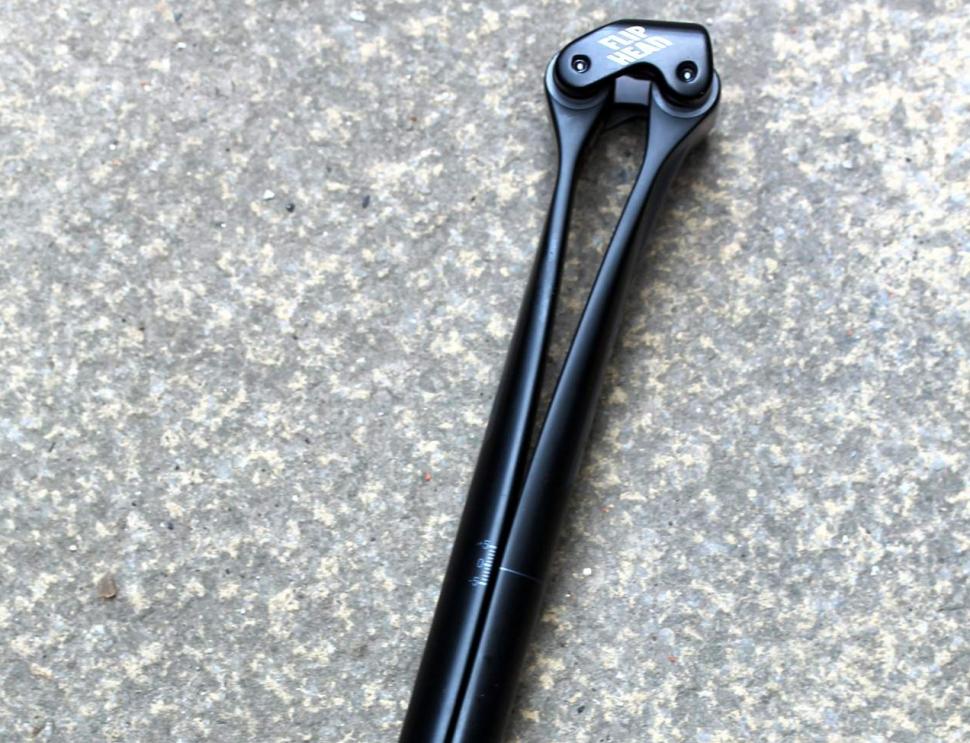
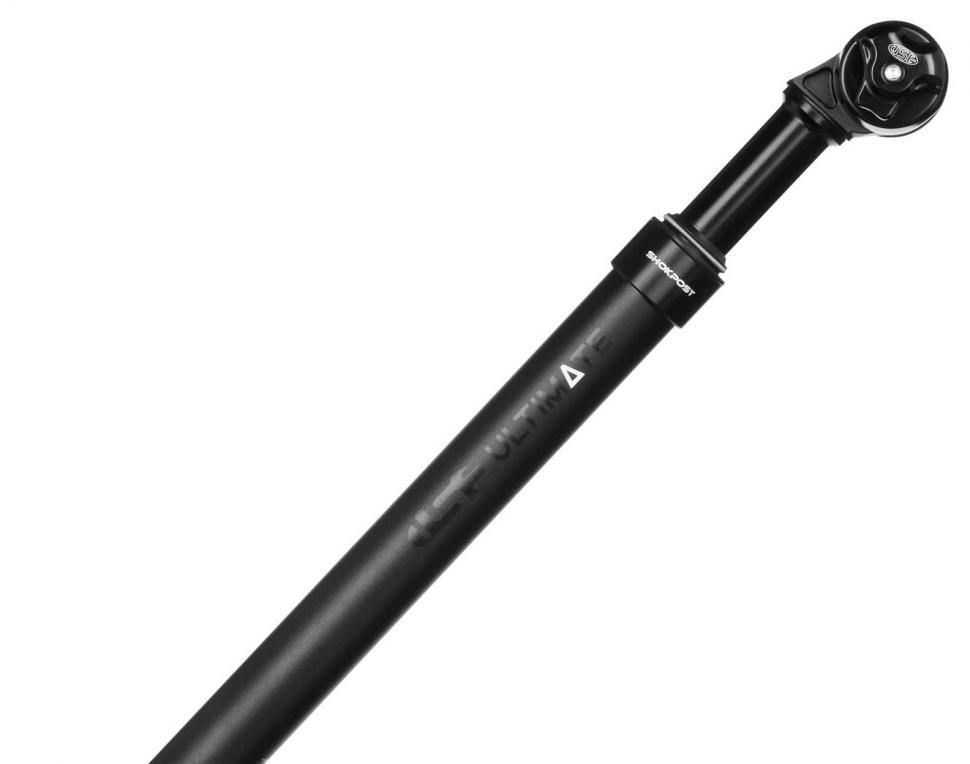


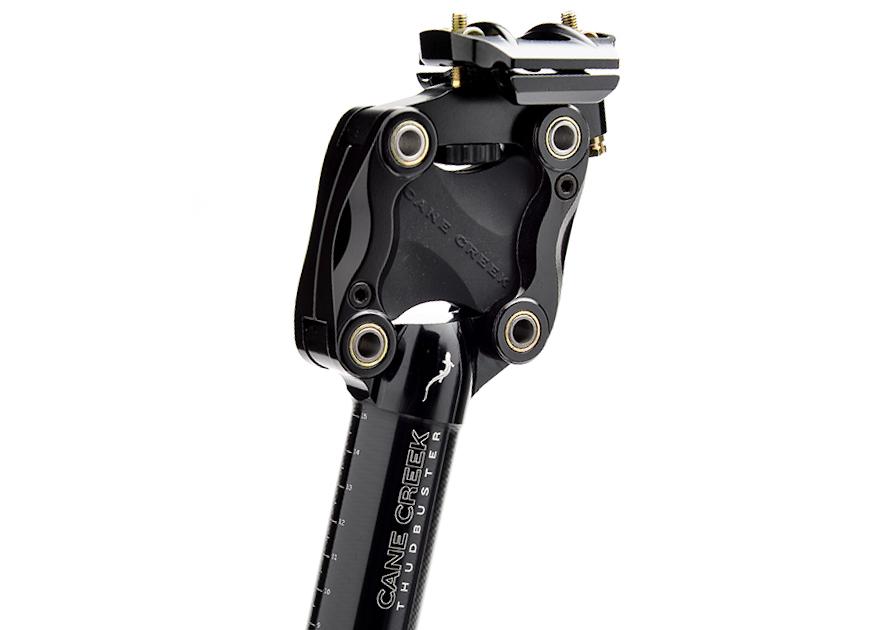
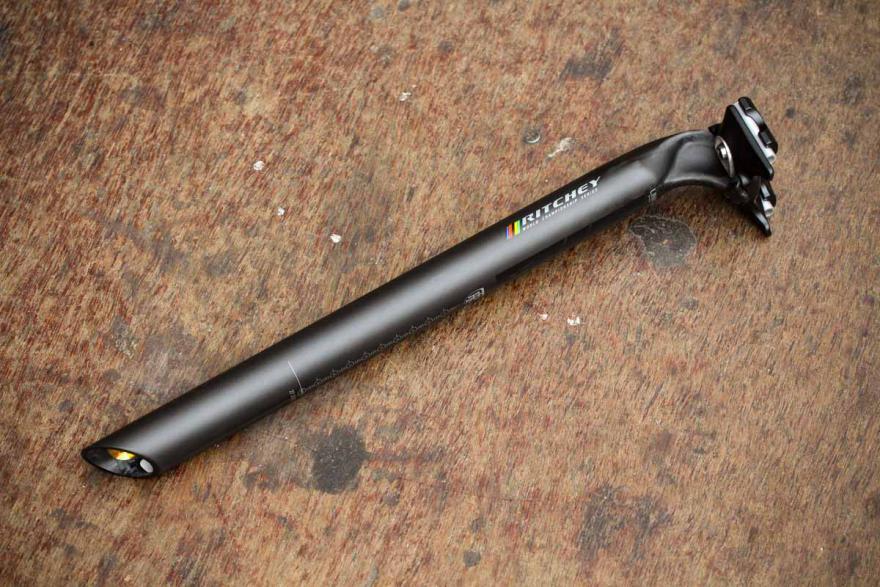
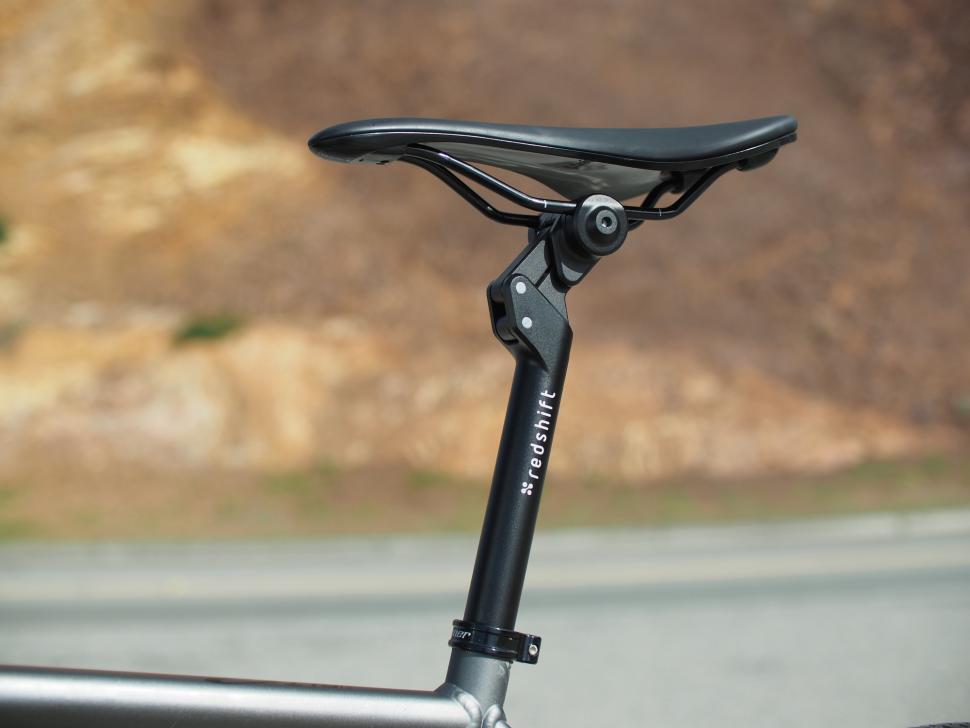

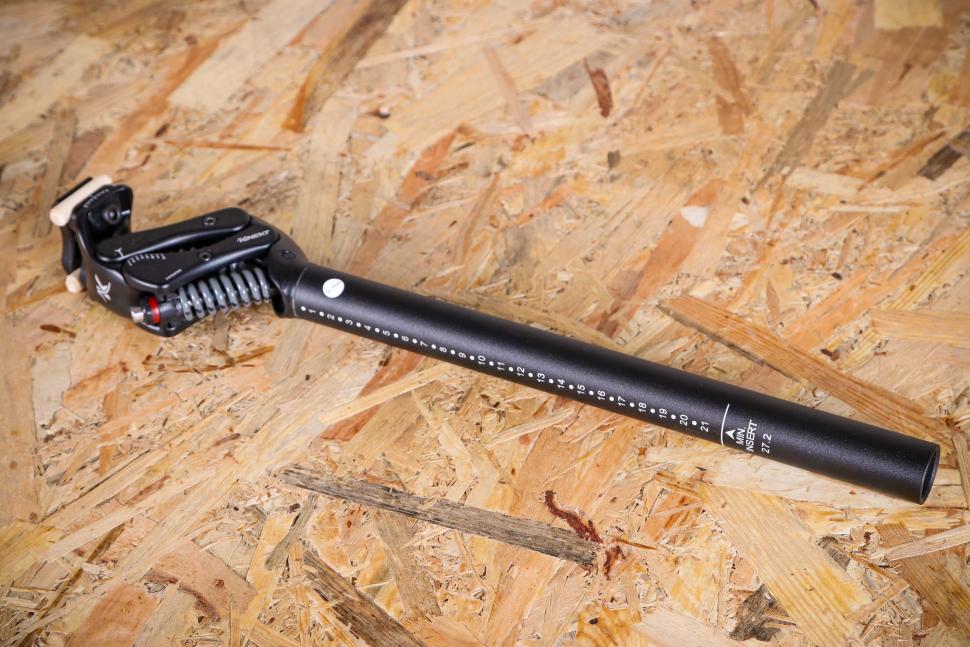
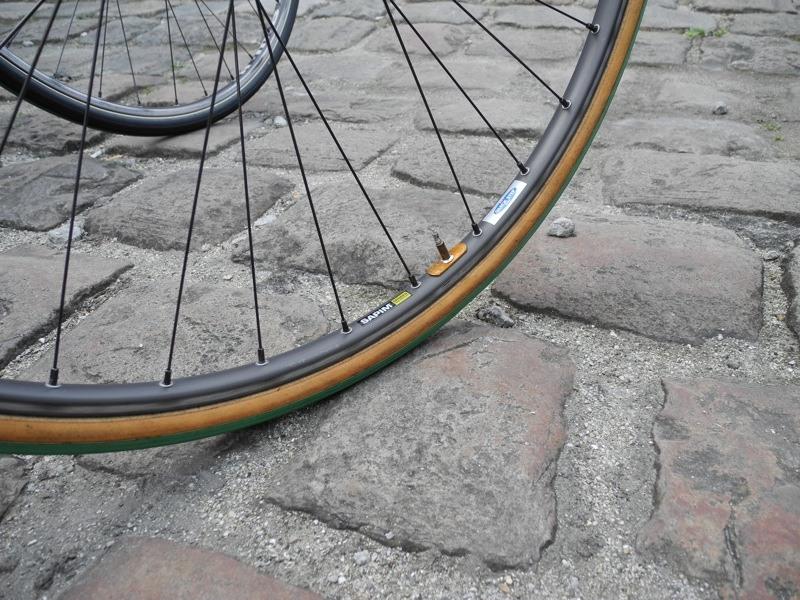
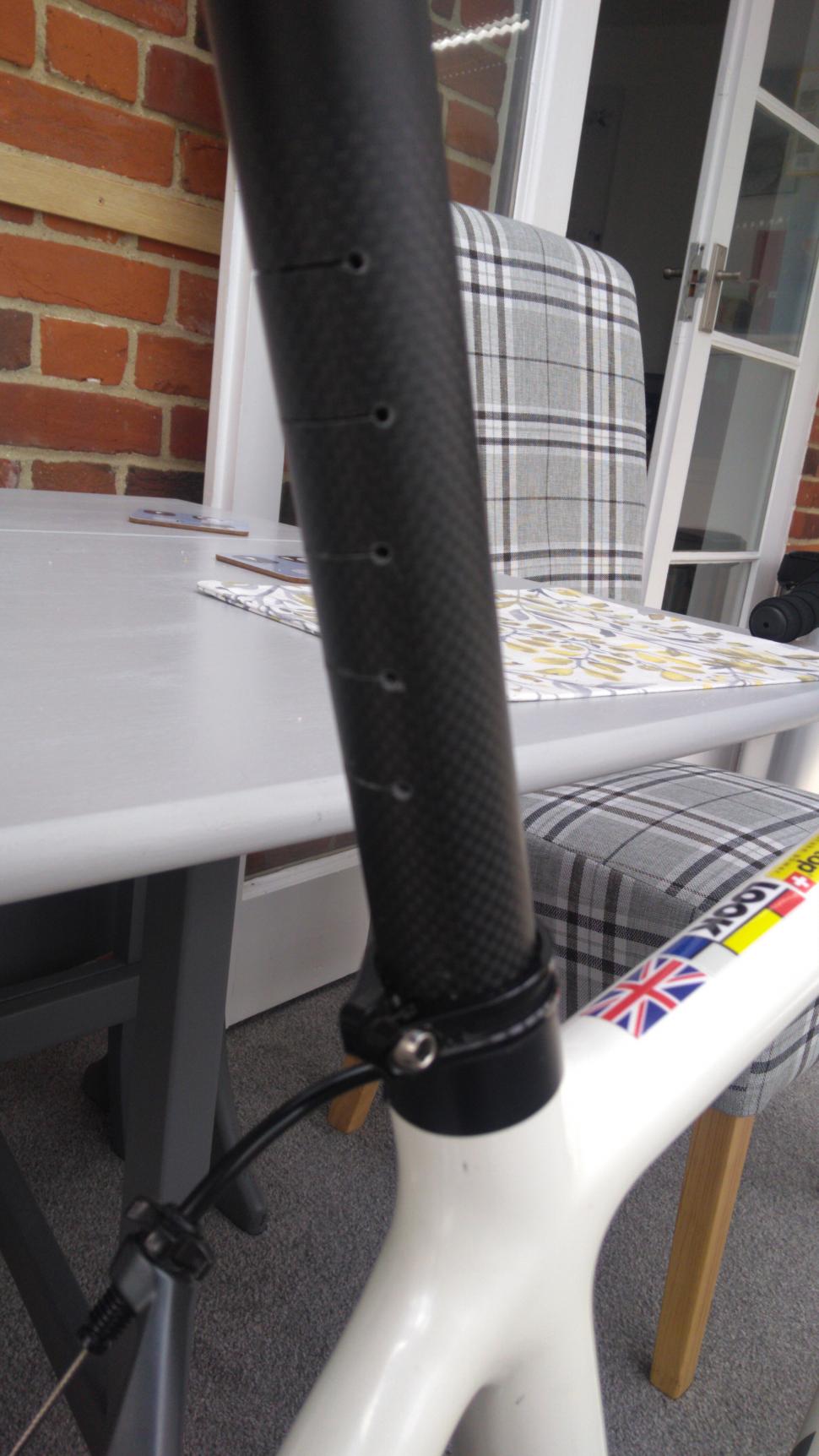

or Team Bahrain ... selective outrage.
This website offers suitable data: https://www.automobiledimension.com/large-suv-4x4-cars.php
Perhaps park the goods in a US Customs Bonded warehouse and then import them out of there when the tariff nonsense settles down?...
Good to see a road.cc review of what must be one of the UK's best-selling 'proper' road bikes....
Another thing ruined by the Americans
Nice to see WvA featuring in the finale.
I have known more than one elder statesman of the club die of a heart failure while out on a ride. Sometimes I feel that's about to happen to me,...
Via the "wireless active steering system".
137m is the farthest I have observed when quickly looking at the Garmin unit....
Yours worked wonders, but if you insist, I'll hop to it...why the need for extra police? Did the fire brigade bottle it?